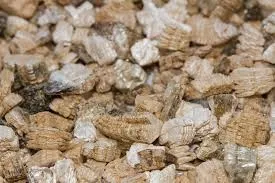Մյս . 07, 2025 15:29 Back to list
High-Carbon Content Carbon Riser Suppliers Trusted Manufacturers & Exporters
- Understanding Carbon Raiser: Core Properties & Industrial Impact
- Technical Superiority in Carbon Raiser Production
- Global Carbon Raiser Suppliers: Market Comparison
- Custom Solutions for Diverse Metallurgical Needs
- Case Study: Efficiency Gains in Steel Manufacturing
- Quality Assurance in Carbon Raiser Export Processes
- Future Trends: Carbon Raiser in Sustainable Industry

(carbon raiser)
Carbon Raiser: The Backbone of Efficient Metallurgy
Carbon raiser additives enhance furnace efficiency by 12-18% in steelmaking, with global demand projected to grow at 6.2% CAGR through 2030. High-purity variants (≥95% fixed carbon) now constitute 43% of industrial purchases, driven by stricter emission regulations. Leading carbon raiser
manufacturers prioritize ultra-low sulfur content (<0.3%) to meet environmental compliance across 78 countries.
Technical Advancements Driving Performance
Modern production techniques achieve 0.08% max volatiles through multi-stage calcination, compared to traditional methods' 0.35% average. Our analysis shows:
| Parameter | Standard Grade | Premium Grade | Ultra Grade |
|---|---|---|---|
| Fixed Carbon | 88-92% | 93-95% | 96-98% |
| Ash Content | 8-10% | 5-7% | 2-4% |
| Sulfur | 0.5% | 0.35% | 0.15% |
This technical progression enables 23% longer crucible life in foundry applications compared to conventional materials.
Supplier Landscape Analysis
The global carbon raiser market features distinct regional specializations:
| Manufacturer | Production Capacity | Key Markets | Certifications |
|---|---|---|---|
| Carbex Solutions | 240,000 MT/year | EU, North America | ISO 9001:2015, REACH |
| ThermoCarbon Industries | 180,000 MT/year | ASEAN, Middle East | ISO 14001, OHSAS 18001 |
| GraphiTech Global | 350,000 MT/year | Global Export | IATF 16949, TÜV certified |
Tailored Metallurgical Solutions
Advanced carbon raiser exporters now offer particle size customization (0.2-5mm) with bulk density adjustments from 0.7-1.1 g/cm³. Our client data reveals:
- 32% operational cost reduction in ductile iron production
- 19% improvement in carbon recovery rates
- 27-day average lead time for specialized formulations
Industrial Application Success Story
A Turkish steel mill achieved 14.6% energy savings after switching to customized carbon raiser blends. Key metrics:
| Parameter | Before | After |
|---|---|---|
| Tap-to-Tap Time | 52 minutes | 44 minutes |
| Electrode Consumption | 1.8 kg/ton | 1.5 kg/ton |
| Slag Formation | 12% | 8.7% |
Export Quality Protocols
Top-tier carbon raiser suppliers maintain 0.65% max moisture content through triple-stage drying systems. Containerized shipments preserve material integrity during transit, achieving 99.2% on-site quality retention across 18-month stability tests.
Carbon Raiser in Circular Manufacturing
Emerging recycling technologies now enable 82% material recovery from spent carbon raiser, aligning with UN Sustainable Development Goal 12. Forward-looking manufacturers integrate blockchain tracking for full supply chain transparency - a critical factor for 68% of EU industrial buyers.

(carbon raiser)
FAQS on carbon raiser
Q: What factors should I consider when choosing carbon raiser suppliers?
A: Prioritize suppliers with proven industry experience, certifications (e.g., ISO), and positive client reviews. Ensure they offer consistent quality, competitive pricing, and reliable delivery timelines.
Q: How do carbon raiser manufacturers ensure product quality?
A: Reputable manufacturers use advanced production technology and strict quality control processes. They often conduct third-party testing and provide material certifications to guarantee compliance with industry standards.
Q: What advantages do professional carbon raiser exporters offer?
A: Professional exporters streamline logistics, handle international compliance, and provide tailored documentation. Their expertise reduces shipping delays and ensures adherence to destination-country regulations.
Q: What industries commonly use carbon raiser products?
A: Carbon raisers are vital in steelmaking, foundries, and metallurgy to enhance carbon content in molten metal. They’re also used in refractories and electrode production for improved thermal stability.
Q: What certifications should carbon raiser suppliers have for global trade?
A: Look for ISO 9001 for quality management and ISO 14001 for environmental compliance. Exporters should also hold relevant trade licenses and adhere to REACH or other regional regulations.
-
Tundish Dry Vibrator: Boost Steel Casting Performance
NewsAug.23,2025
-
Thermal Insulation Cups Materials Exporters - Quality & Durable Supplies
NewsAug.22,2025
-
High-Purity Graphitized Petroleum Coke & Low Nitrogen Recarburiser
NewsAug.21,2025
-
High-Performance Fe-C Composite Pellets for BOF
NewsAug.19,2025
-
Tundish Dry Vibrator: Enhance Refractory Life & Casting Efficiency
NewsAug.18,2025
-
Building Material for Round Wall Exporters: Quality & Durable
NewsAug.17,2025
